If you're searching for how to cook skirt steak in the oven, here's the direct answer: Preheat oven to 400°F, dry brine with salt for 1-2 hours, sear in cast iron pan for 90 seconds per side, finish in oven to 120°F internal temperature, rest 8 minutes, and slice against the grain. This method transforms skirt steak's naturally tough fibers into tender, restaurant-quality results every time.
Why Skirt Steak Requires Special Oven Cooking Techniques
Skirt steak's reputation for toughness comes from its long muscle fibers and minimal marbling. Unlike thicker cuts, this thin cut (typically 1/4-1/2 inch thick) overcooks in seconds. The successful oven method balances precise temperature control with proper protein preparation to achieve tenderness. Here's the complete process optimized for home ovens:
The Complete Oven Method for Perfect Skirt Steak
1. Selecting the Right Skirt Steak
Choose outside skirt steak over inside for better marbling and tenderness. Look for even thickness (no thin ends) and bright red color with fine marbling. Avoid pre-marinated cuts as they prevent proper searing. This cut typically ranges from $8-12 per pound, making it one of the most affordable premium steaks.
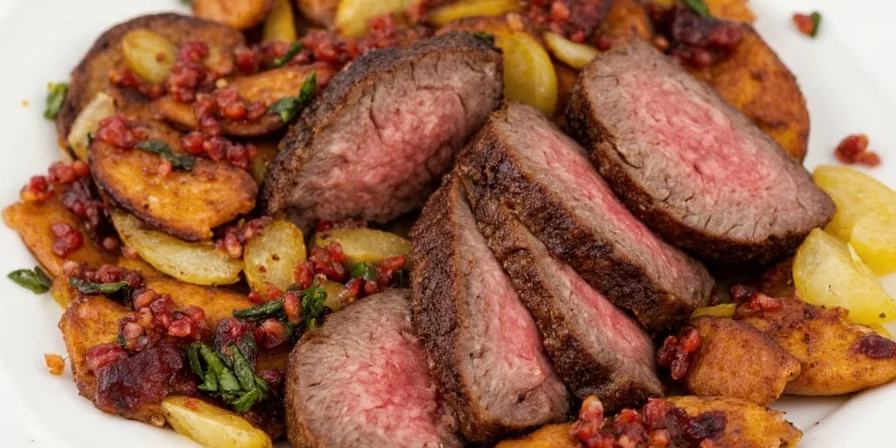
2. Dry Brining: The Science of Juiciness
Dry brining is non-negotiable for skirt steak. Sprinkle 1 teaspoon kosher salt per pound and refrigerate uncovered for 1-2 hours. This process dissolves muscle proteins, allowing deeper salt penetration and water reabsorption. Unlike surface salting, dry brining prevents moisture loss during high-heat cooking—critical for this lean cut.
| Salting Method | Moisture Retention | Searing Result |
|---|---|---|
| Surface salting (immediate cooking) | 20-30% moisture loss during cooking | Uneven crust, steamed surface |
| Dry brining (1-2 hours) | 5-10% moisture loss | Consistent, flavorful crust |
3. Essential Pre-Cooking Preparation
Remove steak from refrigerator 30 minutes before cooking. Pat completely dry with paper towels—any surface moisture prevents proper searing. Apply this simple rub (smoked paprika, garlic powder, onion powder, black pepper) which creates a protective crust that locks in juices. Avoid wet marinades as they introduce surface water that steams the meat.
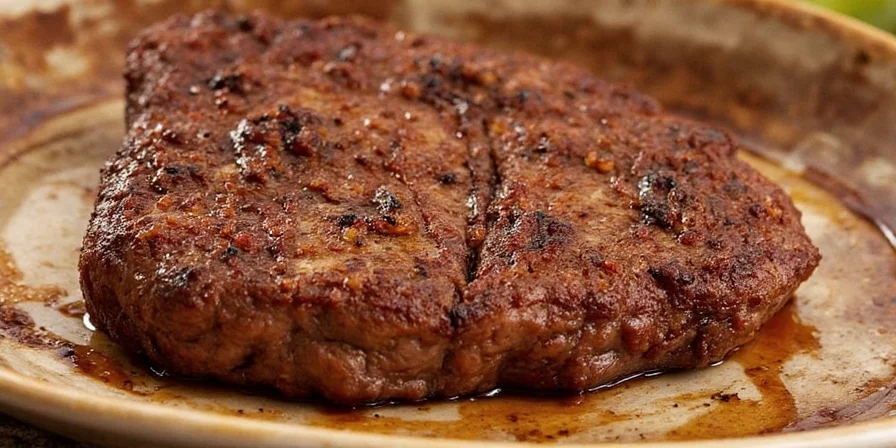
4. Oven and Pan Preparation
Preheat oven to 400°F (200°C) for 20 minutes—verify with independent thermometer as built-in sensors vary. Heat cast iron pan on high for 5 minutes until smoking. The pan's thermal mass (4-5x heavier than stainless steel) maintains consistent searing temperatures, preventing the steak's surface from steaming.
5. The Critical Sear and Oven Finish
Sear 90 seconds per side over maximum stovetop heat, then transfer pan directly to oven. Cook until internal temperature reaches 120°F (49°C) for medium-rare. Skirt steak's thin profile requires horizontal thermometer placement through thickest section. Remove 5°F below target temperature as carryover cooking continues during resting.
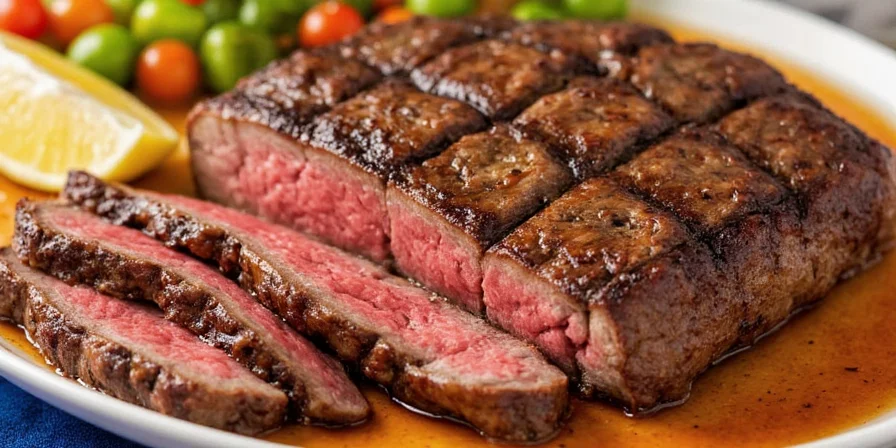
| Cooking Stage | Target Temperature | Texture Result |
|---|---|---|
| Raw | Below 100°F | Raw, chewy |
| Searing Start | 100-120°F | Protein denaturation begins |
| Remove from Heat | 120-125°F | Medium-rare after resting |
| Overcooked | Above 135°F | Tough, dry fibers |
6. Proper Resting Technique
Tent loosely with foil for 8 minutes—skirt steak's density requires longer than thicker cuts. Resting redistributes juices through capillary action. Cutting prematurely releases 30% more moisture, turning tender results dry. This step is non-negotiable for lean cuts.
7. The Physiological Key to Tenderness: Slicing
This is the most crucial step many miss. Skirt steak's parallel muscle fibers require perpendicular slicing to shorten proteins. Identify the grain direction (visible as parallel lines) and cut at 70-90° angles. Incorrect slicing turns each bite into a chewing challenge, regardless of perfect cooking.
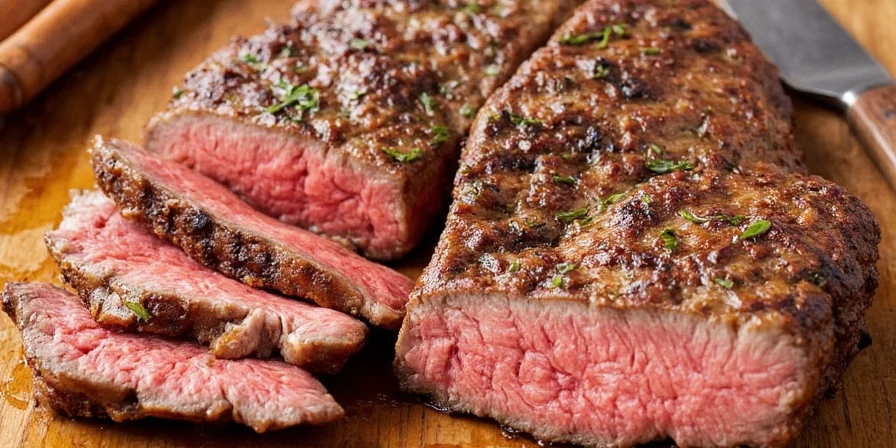
8. Storage and Reheating Guidelines
Refrigerate within 2 hours in airtight containers. For optimal texture, store whole and slice when cold—warm slicing shreds the meat. Reheat only needed portions using low-temperature methods to prevent overcooking.
| Storage Method | Max Freshness | Best Reheating Method |
|---|---|---|
| Fridge (3-4 days) | 2-3 days | 250°F oven for 8-10 minutes |
| Freezer (up to 3 months) | 2 months | Thaw overnight, then low oven |
Common Skirt Steak Oven Cooking Mistakes to Avoid
Mistake #1: Skipping the sear - The Maillard reaction (occurring at 285°F+) creates complex flavor compounds impossible through oven cooking alone. Mistake #2: Overcooking - Skirt steak becomes tough above 135°F internal temperature due to protein contraction. Mistake #3: Slicing with the grain - This leaves long, chewy muscle fibers intact regardless of perfect cooking. Mistake #4: Using non-oven-safe pans - Transferring from stovetop to oven requires cast iron or oven-safe stainless steel.
Why This Oven Method Works Better Than Grilling
While grilling is popular, oven finishing provides superior temperature control for skirt steak's thin profile. The controlled environment prevents the rapid temperature fluctuations that cause overcooking on grills. Additionally, oven heat surrounds the steak evenly, preventing the hot spots common on grills that create uneven doneness across this irregularly shaped cut.
FAQ: Skirt Steak Oven Cooking Questions Answered
Final Tips for Perfect Oven-Cooked Skirt Steak
Mastering oven-cooked skirt steak hinges on understanding its unique fiber structure and thermal sensitivity. The critical insight? Skirt steak isn't just another steak—its long fibers demand specialized handling where timing and technique override generic cooking rules. By implementing these biologically informed techniques—from dry brining's protein modification to precise grain-slicing—you transform this affordable cut into a culinary triumph. Apply these principles consistently, and you'll achieve results that rival professional kitchens without specialized equipment.
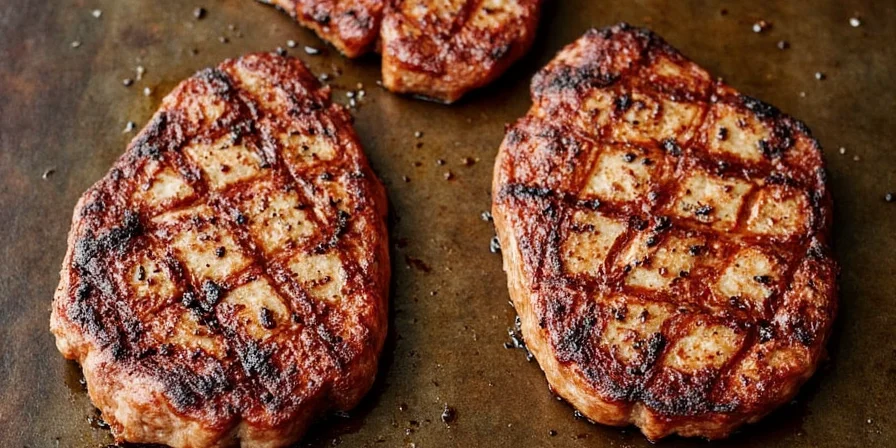

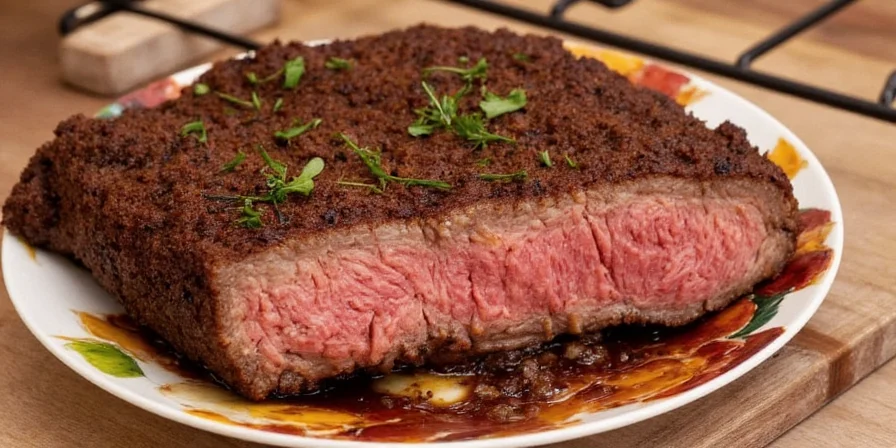









 浙公网安备
33010002000092号
浙公网安备
33010002000092号 浙B2-20120091-4
浙B2-20120091-4